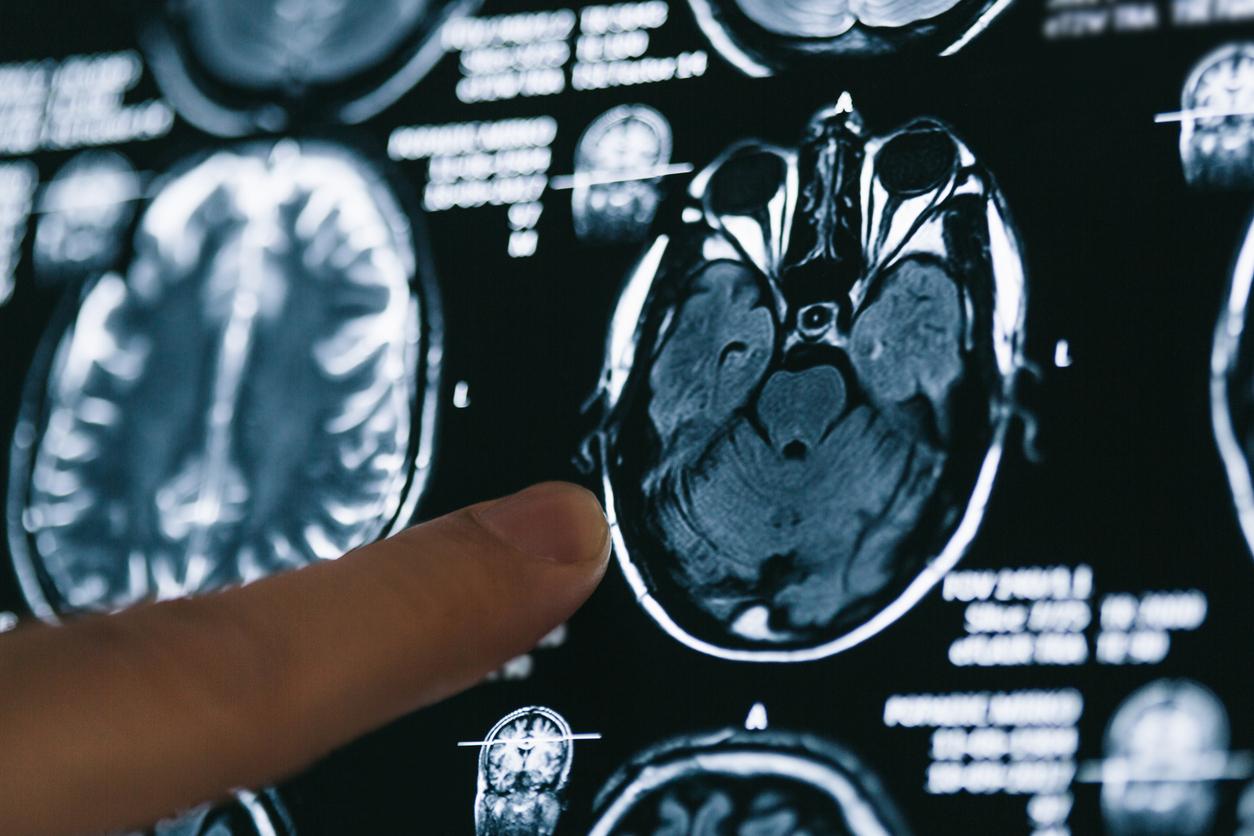This algorithm analyzing data from a brain scan is able, by evaluating the presence of beta-amyloid protein, to estimate when a person is likely to develop Alzheimer’s, before the onset of any cognitive symptoms.

- The algorithm relies on analyzing a single brain scan per participant and their age to predict when symptoms of Alzheimer’s disease will appear.
- It makes it possible to calculate the “tipping point” in the formation of beta-amyloid plaques in the brain even before the appearance of the first cognitive disorders.
Will it soon be possible to determine whether a patient is at risk, in the years to come, of developing Alzheimer’s disease, even though he has no symptoms? This is what a new study published in the journal suggests. Neurology.
Its authors, researchers at the Faculty of Medicine at Washington University (United States), have developed an algorithm capable of estimating when the symptoms of this age-related neurodegenerative disease will appear.
An algorithm that requires only one brain scan
Affecting nearly 900,000 people in France today, Alzheimer’s disease is most often diagnosed after the appearance of clinical symptoms. Affecting brain functions, in particular memory, attention and language, it is due to an abnormal accumulation of beta-amyloid protein in neurons, which leads to progressive and irreversible brain damage. This phenomenon can last up to twenty years before the appearance of the first signs of confusion and forgetfulness.
Positron emission tomography (PET) scans of amyloid are already widely used in Alzheimer’s disease research. The great innovation of this algorithm is to be able, from the age of a person and the data of a single PET amyloid examination, to estimate the degree of advancement of dementia and the time that it remains before the onset of cognitive impairment.
To develop it, the researchers analyzed the amyloid PET scans of 236 people participating in studies on Alzheimer’s disease, who were on average 67 years old at the start of the study. All underwent at least two brain scans spaced an average of 4.5 years apart. The researchers then applied a measure called the standard uptake value ratio (SUVR) to the scans, to estimate the amount of amyloid in each participant’s brain at each time point.
They consulted more than 1,300 clinical evaluations on 180 of the participants. Performed every year or every three years, they show that most patients had normal cognitive faculties at the start of data collection. These repeated assessments therefore allowed them to pinpoint when each participant’s cognitive abilities began to deteriorate.
A reliable calculation of the “tipping point”
By analyzing all the data collected, the researchers then realized that the accumulation of amyloid has a tipping point and that each individual reaches this tipping point at a different age. After this tipping point however, amyloid accumulation follows a reliable trajectory.
“You may reach the tipping point at age 50; it may happen at age 80; it may never happen, details Professor Suzanne Schindler, lead author of the study. But once you pass the tipping point, you will accumulate high levels of amyloid which are likely to cause dementia. If we know how much amyloid a person has right now, we can calculate how long ago they were at the tipping point and estimate how much longer it will be before they are likely to develop symptoms.”
The researchers also found that people who reached the tipping point at a young age took longer to develop cognitive symptoms than those who reached it later in life. Participants who reached the tipping point at age 50 typically took nearly 20 years to develop symptoms; those who reached it at age 80 took less than 10 years.
This is explained by the presence, at an advanced age, of the presence of cerebral lesions due to causes other than Alzheimer’s, before Professor Schindler. “Their cognitive reserves are therefore lower, and it takes less amyloid to cause impairment.”
As for people who reach the tipping point early, they usually carry the APOE4 genetic variant, which is the strongest risk factor for Alzheimer’s dementia.

.

















